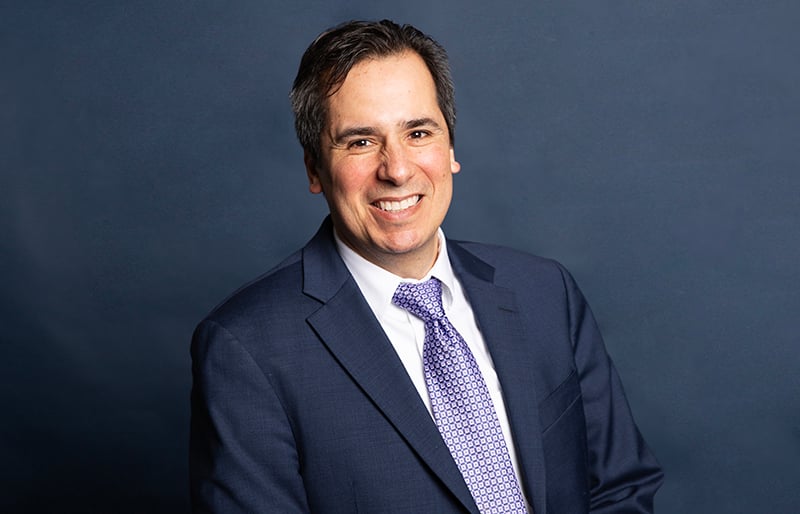
A trip to the spa is supposed to leave you feeling better when you walk out than when you came in. It might include a Zen-like atmosphere, a cup of hot tea, a massage with just the right pressure.
But what about those visits when something is off? Maybe your massage was painful or your pedicure too rough; perhaps your face broke out three days after your facial. Worse, maybe you were left with tissue or skin damage that took months to repair.
“I see spa complications a few times a week,” says Michelle Rivera, a dermatologist in Arlington. A recent patient developed an infection after having a Fraxel laser treatment at a medical spa. By the time Rivera saw her a month later, her face was so swollen and the infection so widespread that she had to go to the emergency room for an IV treatment of antibiotics.
That’s an extreme case. More common are rashes, breakouts, or an allergic reaction when the products used were wrong for the person’s skin. With a massage, it might be unusual pain or discomfort. A bad waxing job might leave behind burned or infected skin.
“I think there’s an assumption when you go to a spa or salon that the person knows what they’re doing,” says Mary Broz-Vaughan of Virginia’s Department of Professional and Occupational Regulation. “As with anything, you don’t want to just assume.”
We talked to spa directors, physicians, government regulators, and industry experts to find out how they evaluate a salon or spa. Here are ten questions you can ask and things you should know before setting foot in the treatment room.
—–
1. May I see your license?
Aestheticians, cosmetologists, and massage therapists—and the places that employ them—are required to hold licenses in DC, Maryland, and Virginia. The documents are to be posted within plain view of the customer, either at the front desk or at workstations.
Licenses and certificates expire after a period of time, so check that they’re current. Licenses are typically renewed every two years.
To get a license for the first time, applicants complete a certain number of training hours, usually in a school setting. Each state has its own rules, but the hour requirements average about 250 for a nail technician; 500 for a massage therapist; 600 for an aesthetician, who specializes in skin treatments; and 1,500 for a cosmetologist, who can work on hair, nails, and waxing. DC and Virginia offer a master-aesthetician license for people trained to perform more complicated skin treatments, such as microdermabrasion and chemical exfoliation; master aestheticians must do 1,200 hours of training. Only Virginia provides licenses for wax technicians (115 training hours); in DC and Maryland, waxing falls under the cosmetologist’s and aesthetician’s license.
License applicants must also provide evidence of completing hands-on treatments—in Virginia, aestheticians must log at least 400 hours to complete their training—and must pass written and practical examinations.
“The purpose for professional regulation is to ensure minimum competency,” says Broz-Vaughan. “We’re not saying they’re the best of the best; the state just wants to ensure that the people who we license are competent enough to not hurt anyone.”
One thing to watch out for is people who use the word “bodywork” to describe their services, says Jay Douglas of Virginia’s Board of Nursing, which oversees massage therapists. Virginia law provides title protection for massage therapists, meaning that only those who are state-certified may use the term. “If someone calls himself a bodyworker, the law doesn’t require him to be certified by us,” says Douglas. A bodyworker may or may not have had much training, even though he or she offers massage-therapy-type services. Douglas says there are more than 5,800 certified massage therapists in Virginia.
Most of the regulatory agencies don’t have the authority, manpower, or budget to weed out unlicensed individuals and businesses; it’s up to the consumer.
Lisa Tep, owner of Sesen Spa in Vienna, says she’s never had a client ask to see licenses; Vanja Simovic, who manages Hela Spa in Georgetown, hasn’t either. In a busy month, Sheldon Brown of DC’s Board of Barber and Cosmetology might field five license-related complaints.
“Does that mean only two people were doing nails without a license? I doubt it,” she says. “This is why we encourage consumers to help us by checking.”
When you call to make an appointment, you might ask who will be performing your treatment. Each jurisdiction maintains an online database for consumers to check a person’s or business’s license. In some cases, you can see whether any disciplinary action has been taken. Consumers can also call or e-mail the office to request the information.
For massage therapists:
• In DC
Board of Massage Therapy
202-724-4900
• In Maryland
State Board of Chiropractic & Massage Therapy Examiners
410-764-4738
• In Virginia
Board of Nursing
804-270-6836
For cosmetologists, aestheticians, and nail and wax technicians:
• In DC
Board of Barber and Cosmetology
202-442-4320
• In Maryland
Board of Cosmetologists
410-230-6320
• In Virginia
Board for Barbers and Cosmetology
804-367-8509
Next: Passing inspection and treatment training
2. Has this salon or spa passed inspection?
In DC, Maryland, and Virginia, salons and spas are usually inspected prior to licensure. Virginia also conducts random inspections.
Inspectors check to see if licenses are posted and to make sure the place maintains a reasonable level of cleanliness. They see to it that practitioners are using the right solutions to sanitize tools and workspaces. And they check that the salon has a clean and functioning bathroom for customers.
“Consumers should look for the same things,” says Phillip Mazza, chair of Maryland’s cosmetology board. “Look at the condition of the salon: If you notice lots of hair on the floor, that would be a signal to me that maybe they’re not putting the effort that they should into sanitation.”
—–
3. What kind of training did you receive?
Curricula vary between among schools, but a program for aesthetics might include courses in chemistry, anatomy, and physiology as well as classes on disorders and diseases of the skin. A nail technician could learn about chemistry and skin and nail structure, while a waxing tech might take classes on the anatomy and physiology of hair and skin.
Massage therapists learn about the musculoskeletal system and take courses on anatomy, physiology, and kinesiology. In DC, massage therapists must be trained in CPR and first aid. Courses on sanitation are required across the board.
A full-time aesthetics student could finish school in about six months, while a nail tech might graduate in two or three months. Cosmetologists and massage therapists could be in school for a year.
“Keep in mind this isn’t medical school,” says Sharilyn Abbajay, who oversees Marriott International’s 181 spas worldwide. “Internationally, the beauty curriculum and schooling is more intense than in the States.” Schools in Eastern Europe, she says, provide the most rigorous training; programs there might take four years or more to complete.
Experts say no one school is considered the best—though brand names such as Aveda are respected. Some spas post bios of their staff on their Web sites; you can check whether a practitioner’s school is accredited.
—–
4. Are you trained to do this treatment?
People who provide spa services are allowed to perform on the treatments for which they've been trained and licensed. A nail technician shouldn't be doing micro-dermabrasion. There are differences among jurisdictions, but here are the services each type of spa or salon worker can usually perform:
• Cosmetologists: hair care, including styling, braiding, relaxing, straightening, coloring, and removing; nail care; and waxing.
• Aestheticians: skin care, including toning, exfoliating, and other non-laser treatments; makeup and eyelash application; eyelash and eyebrow tinting; lightening of body hair; and hair removal using tweezing or chemicals.
• Master aestheticians: all of the duties of an aesthetician plus lymphatic drainage, chemical exfoliation, and microdermabrasion. In certain jurisdictions, the supervision of a medical practitioner is required for some of these services.
“Be your own policeman,” says Broz-Vaughan. “You might feel like a pest asking so many questions, but if you’re unsure, it’s better to speak up now than to regret not having done so later.”
—–
5. Can I see your references?
At the Washington Institute of Dermatologic Laser Surgery in downtown DC, Dr. Tina Alster and her staff do skin treatments that also show up in spas—chemical peels, microdermabrasion, Botox, laser hair removal.
“With more invasive treatments, you want to interview the person who’s going to be working on you before they begin,” Alster says.
A botched injection could leave parts of your face temporarily paralyzed. Alster once saw a patient who had gotten a Botox injection in the wrong place: “She couldn’t close her lips, so she drooled everywhere. It looked like she’d had a stroke.” These injections can take weeks or months to wear off.
Find out how many treatments your practitioner has performed. You also can ask to see pictures of his or her work and to speak with a person who’s been treated in the past.
Next: "How Are Your Tools Kept Clean?"

6. How are your tools kept clean?
Sanitation complaints are the most common ones fielded by government regulators. They range from dirty walls, floors, and bathrooms to infections from improperly cleaned tools. Sesen Spa’s Lisa Tep says she sees three to five clients a week who have developed funguses or infections after nail treatments at other spas.
Government regulations go into lots of detail when outlining decontamination procedures, especially for nail technicians. All three local jurisdictions require reusable instruments to be cleaned with warm water and soap to remove debris, then soaked in hospital-grade disinfectants. Most come in concentrate form, so staffers must dilute the disinfectants with water. Add too much water and the solution is useless, says Tep.
The containers in which the tools soak are supposed to have lids to keep the liquid from becoming contaminated, and the tools must be fully immersed in the disinfectant. Tools should soak for at least ten minutes, and Maryland law requires that the solution be changed “immediately upon becoming dirty, cloudy, or contaminated with blood.”
Some nail salons open new packages of disinfected tools for each client; others clean and store a customer’s own tools for next time.
Tep’s spa as well as some others in the area go a step further and sterilize reusable tools, employing standards usually reserved for dental offices and operating rooms. At Sesen, tools are cleaned, then placed in a one-time-use sterilization pouch. The pouches go into a microwave-like machine called an autoclave, which heats the tools to 250 degrees, a temperature high enough to achieve sterilization.
“The machine cost close to $5,000, but it’s worth every penny,” says Tep, who calls herself a germophobe.
In a salon or spa, items that can’t be sanitized—makeup sponges, wax strips and applicators, emery boards—are not to be used on more than one customer. In Virginia, wax sticks aren’t to be left standing in the pot at any time.
If you notice that a disposable tool looks used, ask the practitioner to take out a new one.
“When I’m getting a pedicure, I like to look at the tub before they fill it with water to make sure there isn’t any residue or dirt in it,” says Broz-Vaughan. “Then I pick my color.”
—–
7. Is there a doctor here?
More spas are offering medical-grade treatments, and state regulations differ on which procedures—microdermabrasion, photo-facials, laser-hair removal—require doctor supervision. If you’re getting more than a facial, it’s good practice to use facilities that have a physician on the premises in case anything goes wrong.
It may not be enough for a spa to say that it’s doctor-run: Some regulations require only that a physician sign the paperwork to assume liability—he or she doesn’t have to set foot in the place.
“I would find out whether the doctor actually practices at the facility,” says Tina Alster. “I don’t know many spas that have doctors there full-time.”
According to Alster and Rivera, laser and light treatments carry the most risk; little mistakes, such as wearing the wrong goggles during a laser procedure, could lead to eye damage. Both say that the training a person receives on how to use a laser is sometimes minimal: In certain states, there’s no certifying exam to take, and an operator may have been trained only by the person who sold the machine.
“The problem really starts when a person goes to a spa and assumes that they are getting medical-level care just because a medical procedure is offered,” says Rivera. “A person has to decide whether they want to be treated as a customer or a patient.”
—–
See Also:
8. Don’t you want my medical history?
Many salons and spas ask clients to fill out medical-history forms before beginning treatment. Questions might range from your skin-care regimen to whether you have heart disease or diabetes.
“It’s important to be honest on those forms,” says Ada Polla, cofounder of the skin-care company Alchimie Forever, a Swiss line whose US headquarters is in DC. “It’s meant to help the aesthetician choose the right products if you’re getting a facial and the massage therapist to know about sensitive areas.”
A diabetic person getting a massage, for example, may want less pressure on his or her legs, because diabetes can cause pain and poor circulation.
Listing the medications you’re taking is important; some can make your skin more sensitive or cause a bad chemical reaction if the wrong products are used. If you’ve had other treatments recently, disclose them, too.
“You don’t want to come in for a lip wax if you just got a medical peel,” says Abbajay. “For a practitioner, that would be a huge red alert.”
—–
9. Are you allowed to do this treatment?
Some treatments and tools are banned in certain jurisdictions. Maryland, for example, doesn’t allow fish pedicures or pedicure razors, called credo blades.
With fish pedicures—a technique originating in Turkey in which a person soaks his or her feet in a bath with fish, which nibble at the calluses—the concern is that the baths aren’t properly cleaned after use. And the razors pose both a safety and a sanitation issue because they’ve been known to cut the skin and draw blood. In this area, only Virginia allows fish pedicures. Razors can be used if they’re cleaned according to regulatory guidelines.
Maryland aestheticians are also prohibited from performing microdermabrasion. A recent regulatory change allows spas to have the machines, but only a person licensed under the Department of Health and Mental Hygiene may administer treatments.
—–
10. Where can I send a complaint?
The agencies listed here deal with regulatory, not service-related complaints. If you got a bad haircut, the government can’t help you. But if you saw an unsanitary practice or an out-of-date license, the government wants to know.
The most common complaints with salons and spas are sanitary issues. With massage therapists, complaints are often sexual in nature—allegations of inappropriate touching or advances.
Virginia’s Board for Barber and Cosmetology received 155 complaints against individual practitioners between July 2009 and April 2011. In the same period, it fielded 3,088 complaints against salons and spas, although not all proved to be valid.
In most cases, grievances must be filed in writing in all three jurisdictions, either online or through the mail. Have your receipt and other documentation, such as a note from your doctor if you received medical treatment.
Once a complaint has been submitted, the agencies conduct an investigation—including an inspection of the facility—and, after a hearing, may take action ranging from dismissing the complaint to suspension or revocation of the license.
“Our purpose is to protect the consumer,” says Broz-Vaughan. “We rely on the consumers to help us when things go awry.”
This article appears in the July 2011 issue of The Washingtonian.

















